It was June 2013 and Francesco Acerbi was going in for a routine medical check-up at his new club Sassuolo. After failing to become Alessandro Nesta’s successor at AC Milan in 12 months, Acerbi was brought back to Genoa before being shipped away again, this time on loan at the Neroverdi. This meant Acerbi was now at his eighth club in as many years, and facing the perilous position of becoming a rudimentary footballing journeyman. But that summer, he soon learnt it wasn’t just his career that needed saving.
Twice diagnosed with cancer in a space of six months, this is the remarkable tale of a man who beat the odds and became a stalwart of Serie A. This is the scout report of one of Italian football’s most formidable defenders.
A model of consistency
Acerbi now finds himself at Lazio seven years on and finally appears to have found a permanent home. Now the centrepiece of Serie A’s most impenetrable backline, the 32-year-old has played an essential role in guiding Lazio towards an unexpected title challenge and in doing so, posing the biggest threat to Juventus’ decade of dominance.
It should be said that the 2019/20 campaign, unquestionably Acerbi’s most glittering to date, is simply the fruit of his seven-year labour, ever since his career was facing a cliff edge in 2013. Following Acerbi’s second recovery from testicular cancer later that same year, he then went on to feature in every single Sassuolo fixture for the next four seasons, amassing 149 consecutive appearances.
From a man that would wake up to find bits of his hair on the pillow – the thought of returning to football a mere fantasy – he had suddenly emerged as a model of consistency. Gone were the days of the Acerbi that incredulously used to turn up to training drunk or the man seemingly content to let his career tread water. Instead, Acerbi was insistent on returning to football, and not only was he coming back to survive in Serie A, but there was also a critical compulsion to make up for the lost time. As the 6ft 3’ defender would later confess, cancer not only changed him as a man but also as a footballer.
On the 24 occasions he has been fit and available for selection this campaign, he has started. In that time, Lazio have conceded just 21 goals, a rate of fewer than a goal per game (0.88). According to the tactical analysis site ‘Whoscored.com,’ Acerbi has played 2116 minutes this season, the 5th most of any member in the squad. But more significantly, he attains the highest average rating (7.12) of any Lazio defender, comfortably ahead of the subsequent closest, Stefan Radu (6.91).
Impressive club form has transcended onto the international stage. Acerbi ended his country’s European qualifiers as a starter, cultivating a place alongside Leonardo Bonucci at the heart of the Italian defence.
Acerbi’s reliability in performances for club and country can be attributed within his metrics of tackling recovery, where each game he ranks highly. Acerbi’s 282 recoveries in Serie A, (11.75 per 90), are the 2nd highest of any Lazio player, only behind Sergej Milinkovic-Savic (309) but resoundingly ahead of every defender at the club, dwarfing Radu (243), who was once again the next best.
In football, it is a common notion that in order to mount a sustained title challenge, a team must be built upon solid defensive foundations. Currently on a 21-match unbeaten streak with their most recent loss coming on the 25th of September last year, it’s fair to say Lazio’s defence has provided that. Therefore, with Acerbi being the standout defensive performer in a backline that continually refuses to wilt and is incessant on excelling, it proves his aptitude for finding consistency should not be underestimated.
In the game against Torino, below is an example of Acerbi showcasing his leadership qualities and laying the perfect platform for teammates to thrive. Lazio are forced to defend in a low block due to Torino experiencing comfortable, sustained possession. At the centre of the back three, Acerbi can be clearly seen barking at his defenders to stay high and not drop into the 18-yard box.
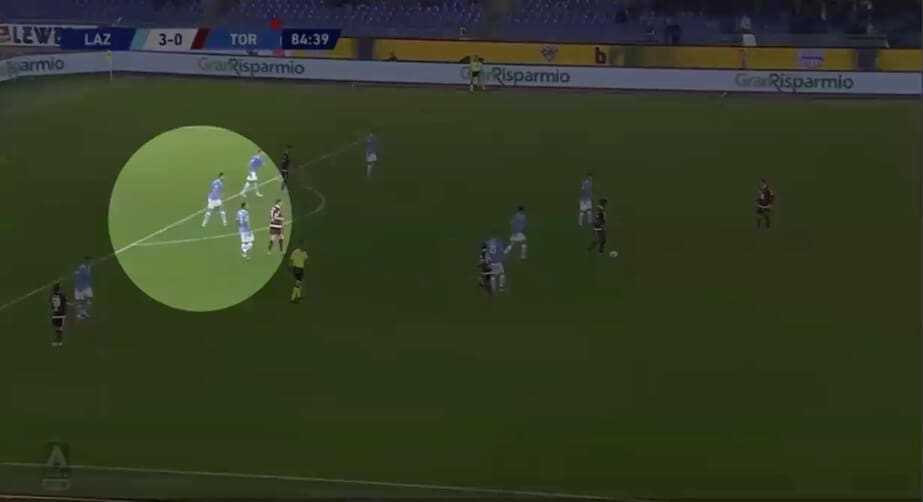
More commonly associated with midfielders or pressing forwards, Acerbi’s (1) quick-fire decision to apply pressure acts as a trigger for the rest of the side. Acerbi’s reading of the game recognises that a forward pass, into Torino’s striker Andrea Belotti (2), is the team’s indication to press. Thus, Acerbi breaks out of Lazio’s defensive line to get tight and avoid Belotti from turning.
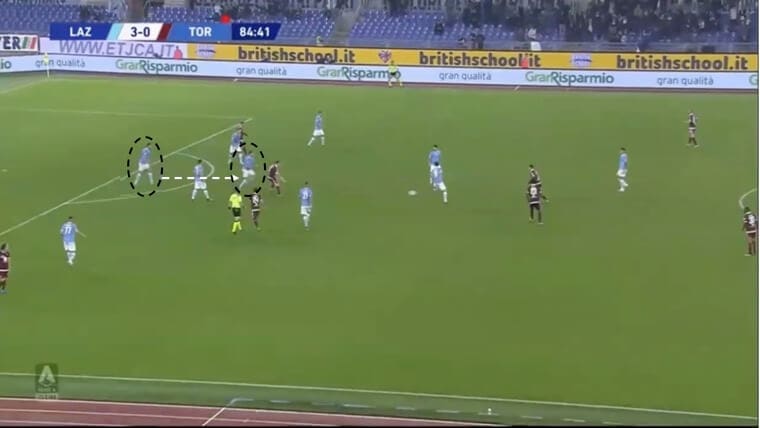
Using his innate propensity for calculated aggression – which will be expanded on later – Acerbi does not dive in but delays Belotti. This allows other blue shirts to swarm the forward and fashion a turnover.
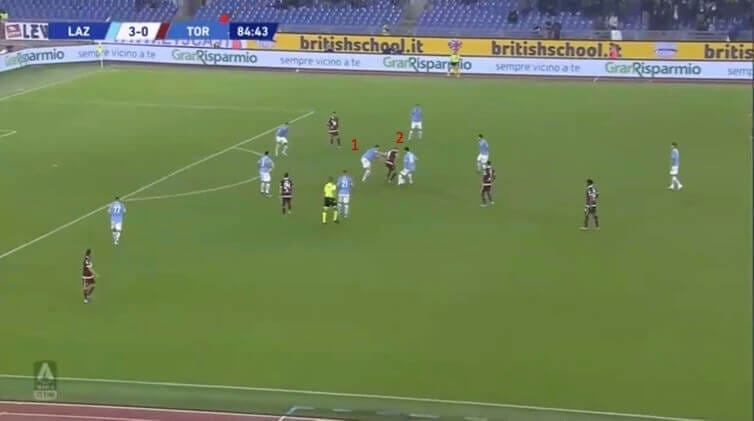
A multi-dimensional defender
In possession, Acerbi is an integral part of Lazio’s build-up play, where they rely on quick transitional play through the thirds. More often than not, he is the trusted first phase of the offensive pattern, where he generates attacks by punching passes through opponents’ lines. This season, Acerbi’s average pass distance is 21.96 metres, thereby showing his natural instinct isn’t necessarily to take the risk-averse choice first. Given these passes are not what you would call wholly safe, it makes his success rate all the more impressive. Per 90, analysis shows Acerbi makes 51.1 passes, with a significant success rate of 92.48 percent.
To amplify the detail on how his passing influences Lazio’s build-up play this season, we can observe his progressive passing data. Making 8.56 progressive passes per game, Acerbi has also accumulated a remarkable success rate of 97.1 percent on the 103 occasions he has passed the ball forward over 40 metres.
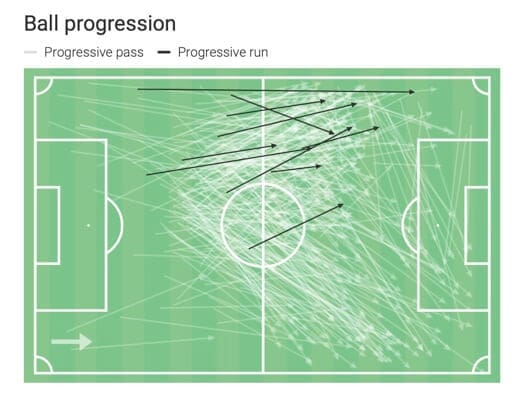
Since Acerbi is predominantly utilised in the centre of Lazio’s back three, he is often the deepest of the outfield players. As a result, him dribbling out from the back may be a too precarious commodity for manager Simone Inzaghi to consider. However, statistics suggest this an adept area for Acerbi that may be conducive to success. Of the 14 instances Acerbi has dribbled this season, he has lost possession just once, giving him a 92.86 percent accomplishment rate.
This can be seen in the case below against Juventus. With Acerbi (1) the deepest outfield Lazio player, and being hunted down by Dybala, there is a lack of viable passing options for the defender.
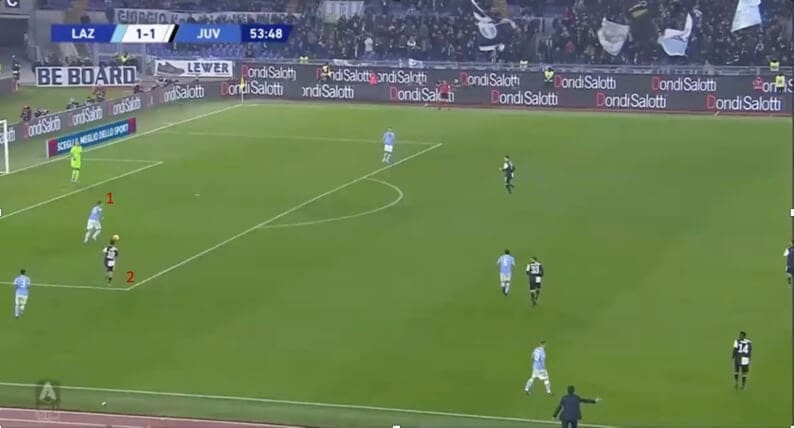
After Dybala attempts to apply pressure, Acerbi opts to step out with the ball, thereby breaking the first defensive line and creating more productive passing lanes for himself.
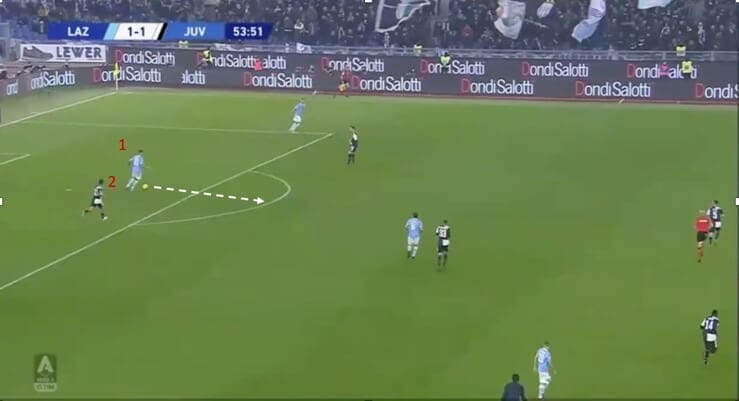
This allows him to find Lazio’s right wing-back Manuel Lazzari (3), and produce a left-footed diagonal pass, a cyclical action prominent in his game.
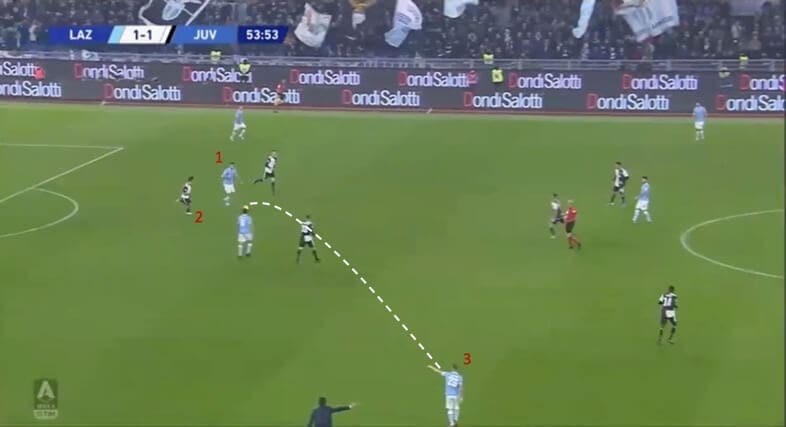
Domination in defensive duels
This is an essential component to Acerbi’s game of which he thrives. Measuring 5.96 defensive duels per 90, Acerbi has a success rate of 74 percent. To put these domineering numbers into context, the entire Juventus’ backline, including compatriots Leonardo Bonucci and Giorgio Chiellini, pales in comparison at 59 percent; a striking reduction to Acerbi. He also betters Juventus’ defence for aerial duels won, (63.33<53.36 percent).
The example below encapsulated Acerbi’s display in Lazio’s 3-1 victory against Juventus back in December and marked the significant growth the 32-year-old has made in his development. The ease of which Acerbi mostly remained resolute against Cristiano Ronaldo was the outstanding apex, using calculated aggression to nullify the Portuguese star’s threat. As Paulo Dybala controls the ball (1), Acerbi (2) is already on the front foot and steps out of Lazio’s backline to stop Dybala from receiving on the half turn. This forces the ball back to Ronaldo (3).
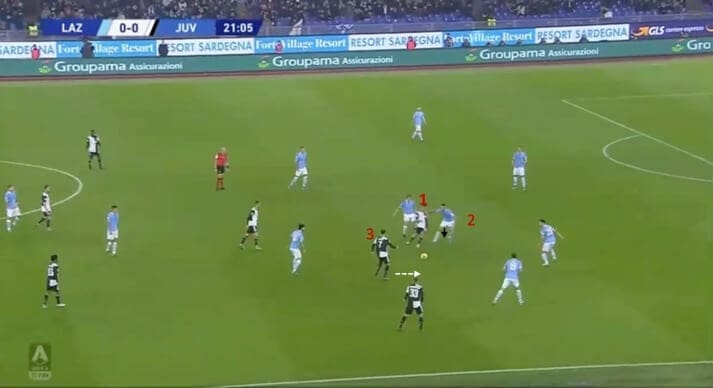
Instead of retreating to prevent any space in-behind, Acerbi carries on his forward momentum and opts to engage the ball once more. The split-second Ronaldo receives the pass, Acerbi’s front foot aggression has enabled him to close down the space and get tight. Rather than diving in – so often the case when a defender is repeating a successive action – Acerbi remains composed and engages his 6ft 3’ frame in body-to-body contact. This unbalances Ronaldo, which gives Acerbi the opening to time his tackle to perfection.
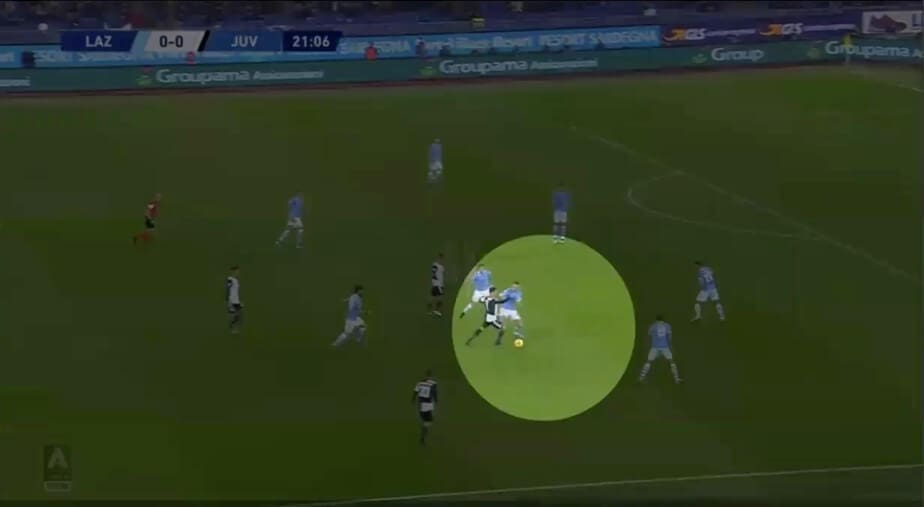
Perhaps an insight into Acerbi’s physical strength, he fairly dispatches a despondent Ronaldo to the floor, before creating a turnover in possession.
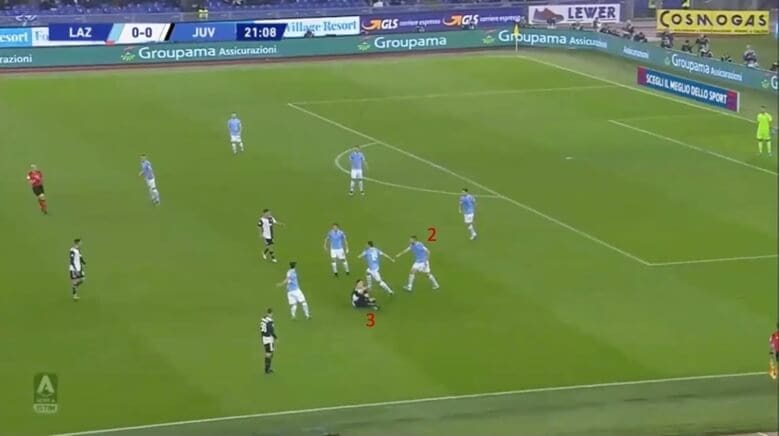
Typically, an overuse of aggression within defenders can often work against their case to have such in the first place. Instead, there is a tendency to associate those types of defenders for ‘diving in’ or making unnecessary fouls in dangerous areas of the pitch. The erratic, sometimes self-destruction mode of defending is prevalent in the modern game, due to the insistence of managers to regain possession as quickly as possible and thus, dominating.
However, this perceived notion cannot be attributed to Acerbi. Although physical engagements are a prominent feature in his game, there is a feeling that Acerbi operates with the pure intentions to put out defensive fires, rather than stoke any unnecessary ones. Perhaps that comes with age and the wealth of experience he’s built up, on the pitch and certainly off it.
Unlike the younger defenders today, who are arguably a generation more brash and erratic with their decision-making than any other wave of footballers that have gone before them, Acerbi displays an innate maturity, where timing and remaining composed is placed with greatly higher value than just diving in. This, in turn, has contributed to just 4 yellow cards this season and conceding only 18 fouls.
When you watch Acerbi play and particularly his attitude towards defending, there is a beautiful simplicity to it. Throughout this season, Acerbi has proven that within the modern game, some old-fashioned aspects are able to age well. Defending comes first, but has to be done with a particular grace and decorum. He’s shown you do not have to become a stick-your chest out, tackle first think-later type of player to survive in this era.
Although the lack of visible aggression may attach a certain archaism to his 14-year playing career, Acerbi’s success in the 2019/20 season is largely thanks to his willingness to adapt and incorporate new facets that can be of use to him. This season, Acerbi has made 67 clearances, which works out at little under 2.8 per game. This number is exactly half of Brescia’s Jhon Chancellor (134), who has made the most in Serie A.
These metrics alone provide an underlying case that the connection between Acerbi and the archaic thought of an experienced defender just clearing the ball into the stands are somewhat impulsive. Instead, as with his aforementioned passing success, Acerbi continues to show a player that is ever-evolving and learning, despite his lengthy playing career.
The diagram below reiterates Acerbi’s calculated aggression in direct tussles with an opposition striker. This season, he has made just 4 sliding tackles in his own third. The evidence highlights that his reading of the game ensures he can anticipate and then get close to forwards, rather than a last-ditch, desperate action, which is often a slide tackle.
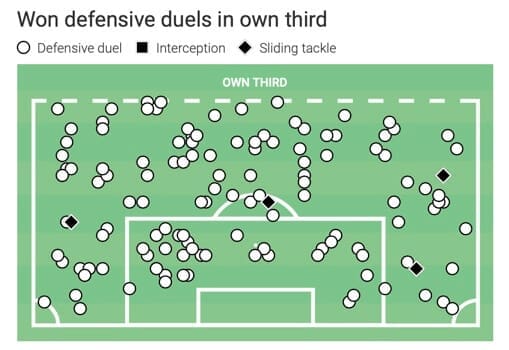
Conclusion
When Serie A starts up its engines again, Lazio will be under no illusions that this is a defining period in their tale, where they stand on the precipice of tasting Scudetto silverware for the first time in just over two decades.
If they are to do so, it’s more than likely Francesco Acerbi will have to play a starring role to ultimately lead them to that glory. The tonic of time will tell if Lazio and Acerbi are to be the underdogs to break Juventus’ domestic supremacy. But one thing is for sure, together, the two have perfectly intertwined each other’s journeys towards the top.
And given where he found himself when he walked out of that medical testing room seven years earlier, you could argue a medal around his neck isn’t the be-all and end-all. Francesco Acerbi fought off cancer and has sought retribution the best way possible. In fact, he may well be a champion already.

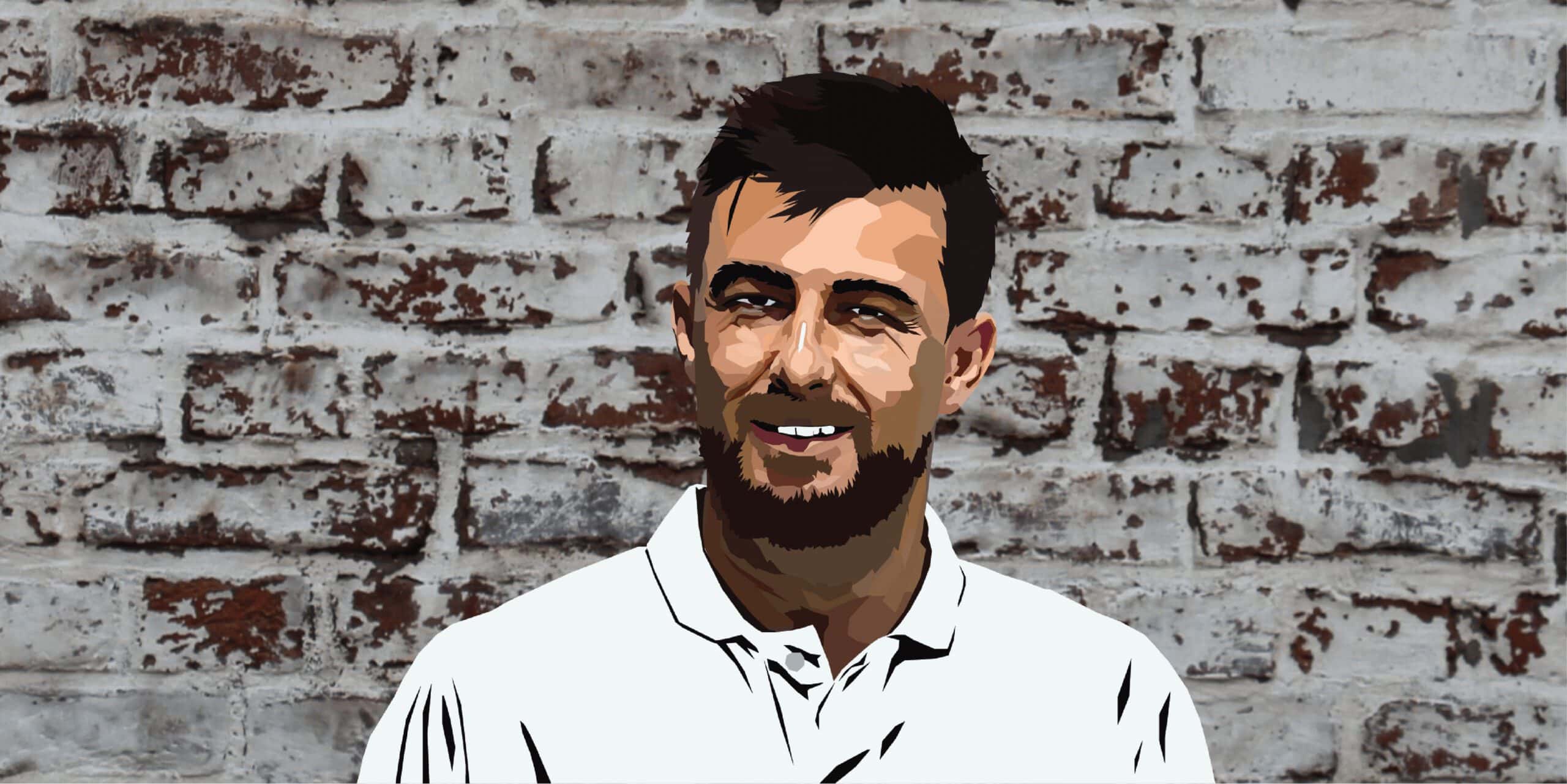



Comments